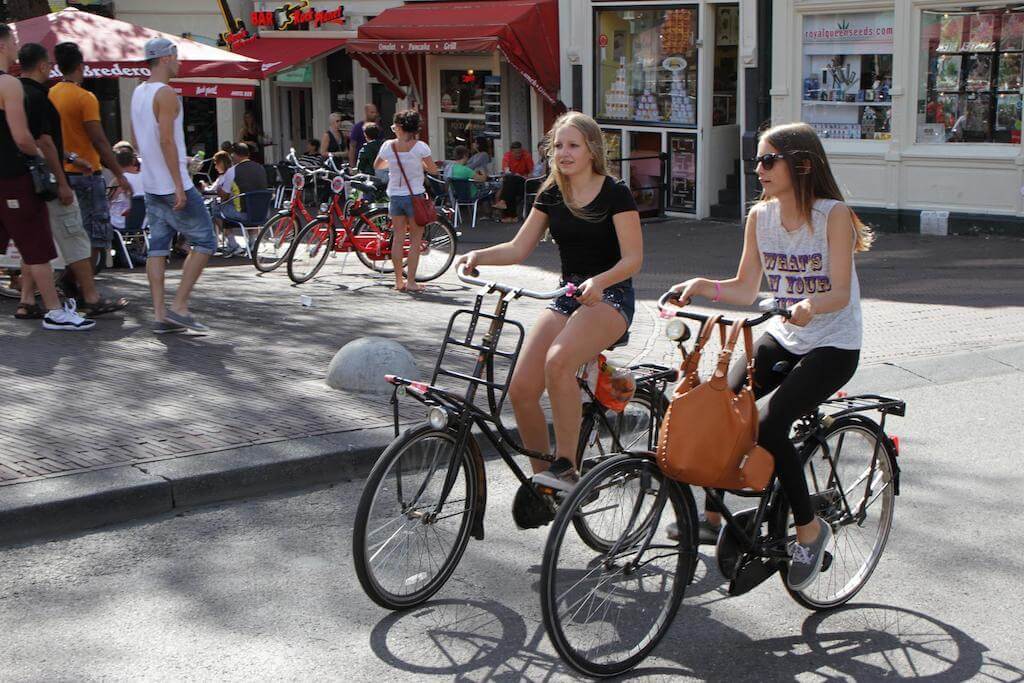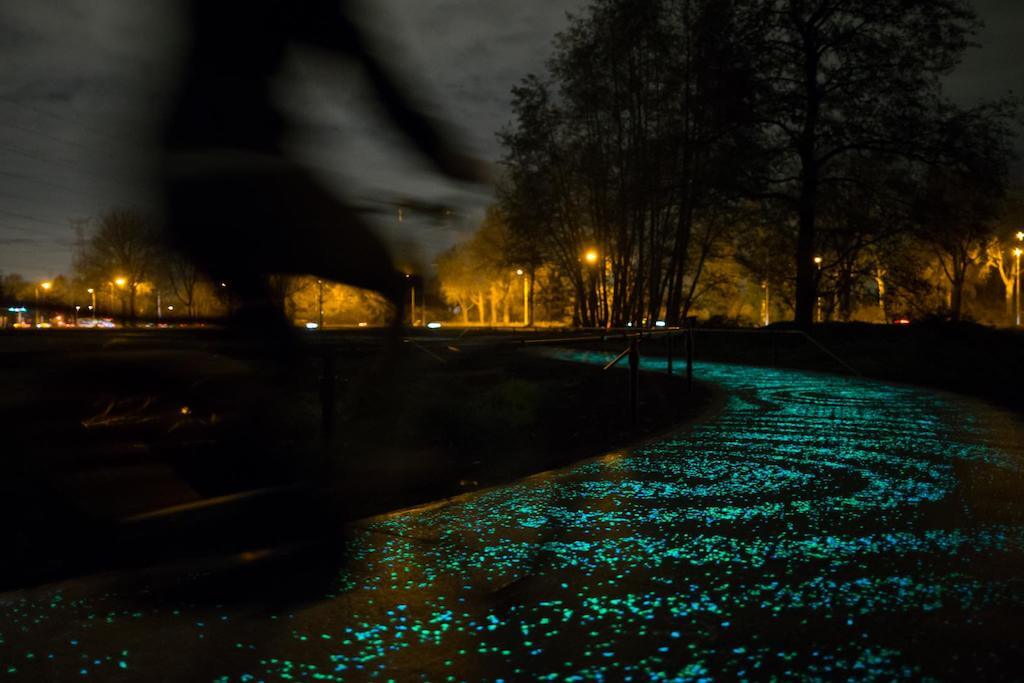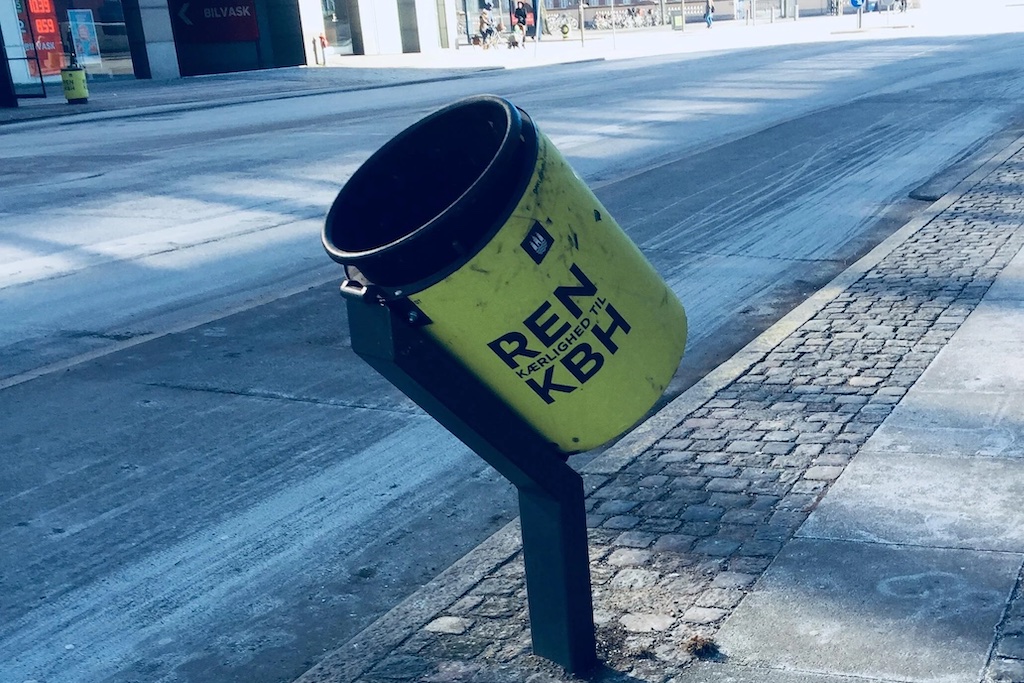Autumn Gear Guide
Find inspiration in our Gear Guide that will keep you out on your bike through wind or rain.
Download NowThe Dutch don’t just ride bikes, they are a part of their everyday life. The average adult in the Netherlands pedals about 1,000 kilometers per year, while teenagers double that, clocking an impressive 2,000 kilometers annually. Cycling isn’t just a mode of transport or a weekend sporting activity; it’s woven into the country’s very identity. […]
The Dutch don’t just ride bikes, they are a part of their everyday life. The average adult in the Netherlands pedals about 1,000 kilometers per year, while teenagers double that, clocking an impressive 2,000 kilometers annually. Cycling isn’t just a mode of transport or a weekend sporting activity; it’s woven into the country’s very identity. Even seniors get in on the action—25% of them cycle every single day! More than a quarter of all trips in the country are by bicycle.
So what’s the secret? Why does the Netherlands embrace cycling like no other country? Here are 20 reasons why the Dutch are absolutely in love with their bikes. Consider this a blueprint for two-wheeled success.
The Netherlands boasts an incredible 35,000 kilometers of dedicated cycling paths, ensuring that no matter where you go, you can get there on two wheels. Unlike in other countries where cyclists must share the road with cars, these paths are designed exclusively for bikes, making riding safer and more enjoyable. When you add in the bike lanes that run through cities like Amsterdam, Rotterdam, and Utrecht, the total jumps to a staggering 55,000 kilometers of bike-friendly routes. Whether you’re navigating a quiet countryside road or a bustling urban street, cycling infrastructure ensures a seamless journey from start to finish.
With a population of 17 million, the Netherlands is home to a whopping 24 million bicycles. Yes, that’s right, more bicycles than people. This means almost everyone owns a bike, whether for commuting, running errands, or leisure rides. Compare that to the U.S., where 325 million people own just 70 million bikes, and it’s easy to see that cycling is more than just a pastime in the Netherlands—it’s a way of life. Some families have separate bikes for different occasions: a sturdy city bike for daily use, a racing bike for exercise, and even a cargo bike for grocery runs or transporting children.

Hoge Veluwe National Park, Netherlands (photo: hogeveluwe.nl)
From infancy, Dutch children are accustomed to life on two wheels—sort of. The bakfiets (box bike) is a cargo bike used by parents and grandparents to transport kids around town. Unlike cars, these bikes allow parents to keep a close eye on their children, who often sit in the front box, enjoying the ride. It’s not uncommon to see a bakfiets carrying two or three little ones, bundled up in winter or shaded in summer, as they cruise through Amsterdam’s charming, tulip-lined streets. Some bakfiets even come equipped with rain covers, built-in seats, and safety belts, making them an all-weather, family-friendly vehicle.
Every spring, Dutch schoolchildren take their verkeers examen, a mandatory cycling traffic test that ensures they’re ready to navigate the country’s bike-friendly streets. The test includes both theoretical and practical components, teaching kids the rules of the road, proper signaling, and defensive cycling techniques. And they need it—most secondary school students ride their bikes to school, sometimes pedaling as much as 15 kilometers each way! Schools encourage cycling as a primary mode of transport, reinforcing lifelong habits that make cycling second nature by adulthood.

Amsterdam
Unlike in many other countries, the Dutch don’t generally wear helmets when cycling. That’s because the Netherlands has designed its cycling infrastructure so well that helmets are almost unnecessary. Dedicated lanes, special traffic-calming measures, and an overall culture of bike awareness make cycling accidents rare. Dutch road design prioritizes cyclists, with separate traffic signals, roundabouts, and clear signage ensuring a safe ride. Plus, Dutch cyclists go everywhere—from business meetings to weddings—so a helmet simply wouldn’t match the outfit.
In many countries, cycling means suiting up in Lycra. Not in the Netherlands. Here, people bike in their regular clothes, whether they’re heading to work, running errands, or meeting friends for coffee. Unless you’re a wielrenner (racing cyclist), spandex is entirely optional. It’s common to see people pedaling in suits, dresses, and even high heels, proving that cycling isn’t just for athletes—it’s for everyone.
Utrecht’s central train station is home to the world’s biggest underground bike parking facility, with space for 12,500 bicycles. Given that 40% of visitors arrive in the city by bike, this massive infrastructure investment makes perfect sense. The parking lot is designed for efficiency, with digital displays showing available spots, moving walkways to help cyclists navigate, and a secure access system to prevent theft. Other cities, including The Hague and Amsterdam, are following suit with similar large-scale bike parking solutions.
According to the European Cyclists’ Federation, the Netherlands consistently ranks as the safest place to ride a bike. The country’s commitment to infrastructure and safety means cycling fatalities are far lower than in other nations. Roundabouts prioritize cyclists, speed limits in urban areas are designed to protect vulnerable road users, and drivers are well-accustomed to sharing the road. Additionally, strict liability laws ensure that in an accident involving a cyclist and a motorist, the driver is almost always held responsible, further encouraging careful driving.
Rain doesn’t stop the Dutch from riding. Many cyclists have mastered the skill of holding an umbrella while pedaling through the drizzle, a feat that seems impossible to outsiders. And for those who haven’t perfected the technique? A traditional plastic cape or a high-tech rain poncho will do the trick. Some commuters even have bicycles equipped with rain guards and splash-proof saddlebags to keep their belongings dry.

Amsterdam bicycle commuter with umbrella
Sustainability is key in the Netherlands. A pilot program in Amsterdam replaced regular bike paths with solar panels, generating 9,800 kWh of electricity in its first year. These innovative paths combine eco-consciousness with practicality, proving that cycling and green energy go hand in hand. The success of these solar bike lanes has inspired other cities to explore similar projects, further cementing the Netherlands as a leader in sustainable transportation.
Inspired by the Dutch master’s famous painting, this Eindhoven bike path glows at night with thousands of solar-powered LED lights. Riding along it feels like cycling through a dream.

Van Gogh Path (Studio Roosegaarde)
In Utrecht alone, 125,000 people cycle every day. On some streets, more than 33,000 cyclists pass through during peak hours. The result? A mesmerizing, almost choreographed dance of bicycles flowing through the city. Major cycling corridors have separate traffic lights for bikes, ensuring a smooth and efficient commute. Unlike car traffic jams, these cycling rush hours are quiet, eco-friendly, and surprisingly orderly.
In the Netherlands, dogs are just as much a part of the cycling culture as humans. You’ll see small pups nestled in baskets, larger ones lounging in bakfietsen, and even some balancing on their owner’s bike seat.
The Hovenring in Eindhoven is a floating, circular cycling bridge that looks like it belongs in a sci-fi movie. Suspended over a busy intersection, this innovative structure is a dream for cyclists and a must-visit landmark for bike enthusiasts.

Hovenring in Netherlands
The Dutch public transportation system integrates seamlessly with cycling. The OV-fiets (public transport bike) rental system allows commuters to rent a bike for a small fee at train stations across the country. It’s affordable, convenient, and perfectly suited to the Dutch way of getting around.
Want to explore multiple cities in the Netherlands without leaving your bike behind? No problem! The Dutch trains welcome bikes aboard, making it easy to combine cycling with rail travel. You can bring your bike on any train from 6:30 a.m. to 6:30 p.m. on weekdays, and keep them in designated areas. On weekends and holidays, you’re free to take your bike at any hour. So pack your gear and hop on the train with your trusty two-wheeler for a seamless journey across the country.
In the Netherlands, comfort comes first—especially when you’re cycling! Dutch people are known for their practical attire, opting for easygoing outfits that let them ride effortlessly through the city. Forget about tight jeans or high heels; it’s all about staying cool and casual, whether you’re heading to the office or out for a leisurely ride. No need to sweat it; Dutch cycling fashion is all about ease.

Amsterdam
For longer trips, the Netherlands offers specialized bike highways designed for cyclists who want to get from city to city quickly and comfortably. These dedicated routes, like the RijnWaalpad between Arnhem and Nijmegen, let cyclists cruise without dealing with cars or stoplights. Perfect for anyone who loves the freedom of cycling but needs to cover more distance without interruptions.
Cycling to work in the Netherlands? Some employers offer a tax-free bike allowance to help you cover travel expenses—up to €0.19 per kilometer. Plus, since 2020, the rules for using company bikes for personal trips have been simplified, making it easier for employees to cycle everywhere, all the time. It’s just another way the Dutch embrace cycling as part of their daily routine.

Bikeside bins in Netherlands
Cycling through the Netherlands with a snack in hand? The Dutch have thought of everything, even providing bins designed specifically for cyclists. Whether you’re munching on an apple or tossing a banana peel, these convenient bike bins let you dispose of waste without ever getting off your bike. It’s the kind of practical innovation that makes cycling in the Netherlands a breeze.
Find inspiration in our Gear Guide that will keep you out on your bike through wind or rain.
Download Now
Leave a comment